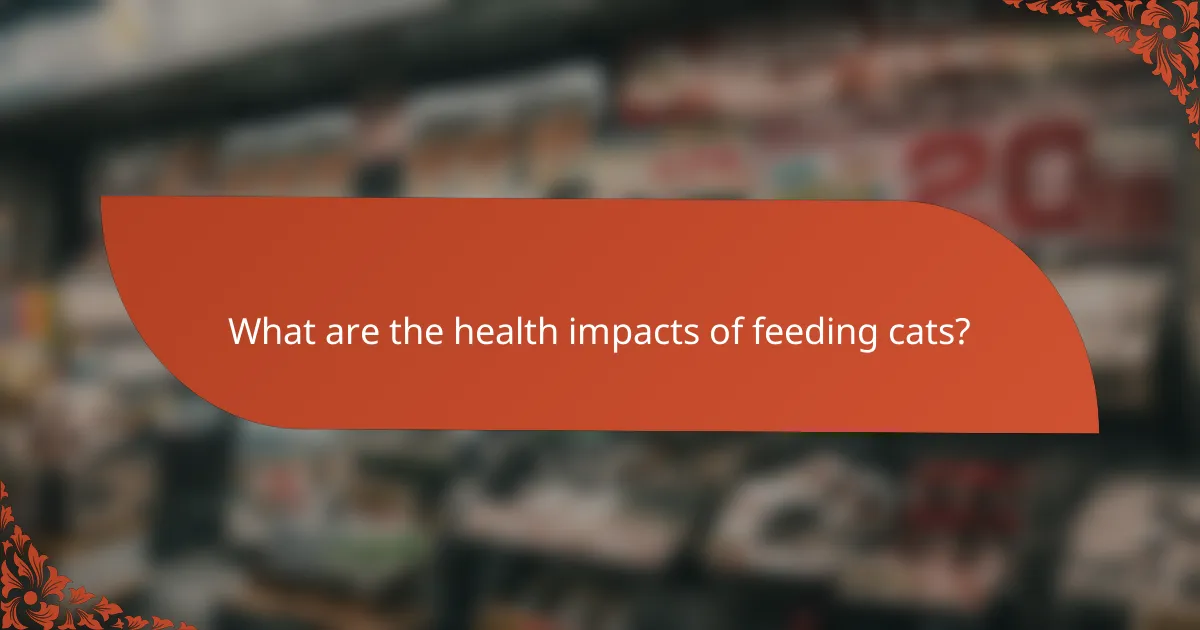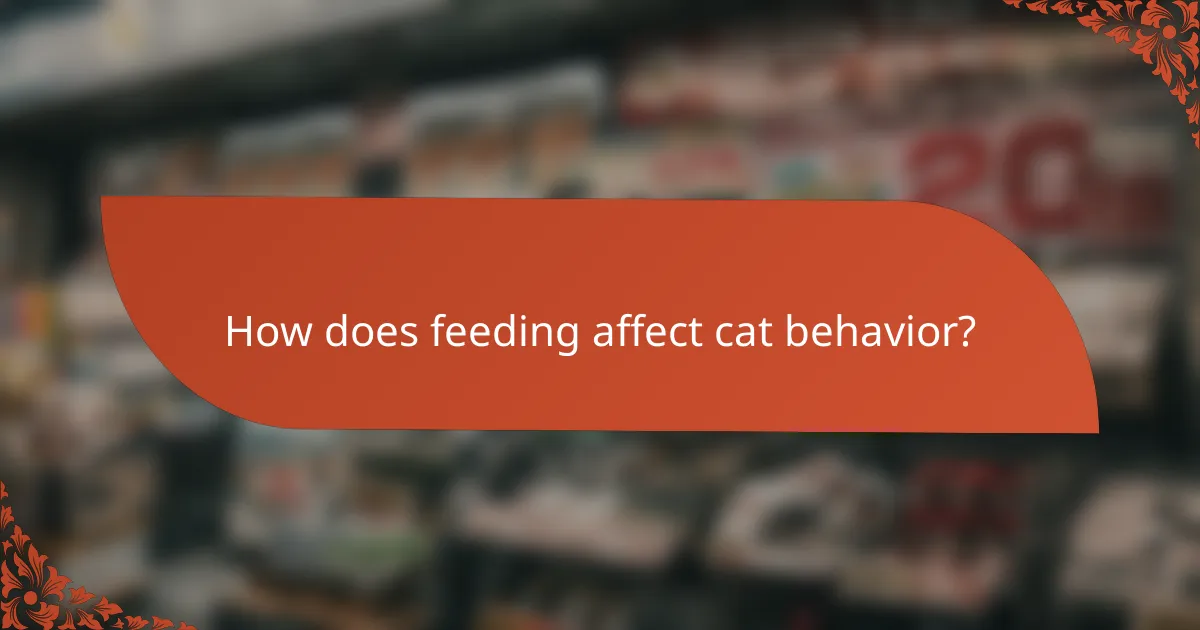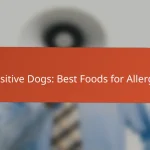Feeding cats requires careful consideration of their unique dietary needs, which vary significantly across different life stages. In urban settings, where access to fresh ingredients may be limited, high-protein, commercially available diets become essential for maintaining nutritional balance. Proper nutrition is vital for preventing health issues such as obesity and dental problems, ultimately ensuring a longer, healthier life for our feline companions.

What are the best diets for cats in urban areas?
The best diets for cats in urban areas should focus on high protein content, convenience, and nutritional balance. Urban environments often limit access to fresh, raw ingredients, making commercially available options more practical.
High-protein commercial cat food
High-protein commercial cat food is designed to meet the dietary needs of felines, providing essential nutrients in a convenient form. Look for products with meat as the primary ingredient and avoid those with excessive fillers like corn or soy.
Brands often vary in quality, so consider those that meet AAFCO (Association of American Feed Control Officials) standards. A typical high-protein cat food may contain around 30-40% protein, which is ideal for maintaining muscle mass and overall health.
Raw food diets
Raw food diets for cats consist of uncooked meat, organs, and bones, mimicking their natural hunting behavior. While some owners advocate for this diet, it’s crucial to ensure it is balanced and safe to prevent nutritional deficiencies or bacterial contamination.
Consult with a veterinarian before starting a raw diet to determine appropriate recipes and supplements. If you choose this route, aim for a mix of muscle meat, organ meat, and bone, ensuring a proper calcium-to-phosphorus ratio.
Homemade cat meals
Homemade cat meals can be a healthy alternative if prepared correctly. Use high-quality meats and avoid harmful ingredients like onions, garlic, and certain grains. Recipes should be balanced, incorporating proteins, fats, and essential vitamins and minerals.
Consider consulting a veterinary nutritionist to create a meal plan that meets your cat’s specific needs. Homemade diets can be time-consuming, so plan meals in advance to ensure consistency and nutritional adequacy.
Grain-free options
Grain-free cat food is increasingly popular, particularly for cats with sensitivities to grains. These diets typically focus on meat and alternative carbohydrate sources like peas or potatoes, which can be easier on a cat’s digestive system.
When selecting grain-free options, check for high protein content and avoid excessive carbohydrates. Some cats may thrive on grain-free diets, but it’s essential to monitor their health and consult with a veterinarian to ensure they are receiving balanced nutrition.

How do dietary needs change with age?
As cats age, their dietary needs evolve significantly, requiring adjustments to their nutrition to support their health and well-being. Kittens, adults, and senior cats all have distinct requirements that must be met to ensure optimal growth, maintenance, and longevity.
Kittens require higher protein
Kittens have rapidly growing bodies and require a diet that is rich in protein to support their development. Typically, their food should contain at least 30-40% protein to help build muscle and support overall growth. High-quality animal proteins, such as chicken or fish, are ideal sources.
In addition to protein, kittens also need essential fatty acids and vitamins to promote healthy brain development and immune function. Feeding them specially formulated kitten food ensures they receive the right balance of nutrients during this critical growth phase.
Adult cats need balanced nutrition
Adult cats require a balanced diet that includes a mix of proteins, fats, carbohydrates, vitamins, and minerals. A protein content of around 25-30% is generally recommended to maintain muscle mass and energy levels. It’s important to choose high-quality commercial cat foods that meet AAFCO standards for adult maintenance.
Additionally, adult cats benefit from a diet that includes fiber to support digestive health. Regular feeding schedules and portion control can help prevent obesity, which is a common issue in adult cats. Always consult with a veterinarian to tailor the diet to your cat’s specific needs.
Senior cats benefit from joint support
As cats age, they may experience joint stiffness and mobility issues, making it crucial to provide diets that support joint health. Senior cat food often contains added glucosamine and omega-3 fatty acids, which can help reduce inflammation and promote joint function.
In addition to joint support, senior cats may require fewer calories due to decreased activity levels. Adjusting portion sizes and focusing on nutrient-dense foods can help maintain a healthy weight while ensuring they receive adequate nutrition. Regular veterinary check-ups are essential to monitor their health and dietary needs as they age.

What are the health impacts of feeding cats?
Feeding cats appropriately is crucial for their overall health, as improper diets can lead to various health issues. Key impacts include obesity, dental problems, and digestive disturbances, all of which can significantly affect a cat’s quality of life.
Obesity risks from overfeeding
Overfeeding is a primary cause of obesity in cats, which can lead to serious health complications such as diabetes, joint problems, and heart disease. It is essential to monitor portion sizes and adhere to feeding guidelines based on the cat’s age, weight, and activity level.
To prevent obesity, consider using a measuring cup for food portions and avoid free-feeding. Regularly assess your cat’s body condition score to ensure they maintain a healthy weight, aiming for a lean body shape rather than an overweight appearance.
Dental health from dry food
Feeding dry food can promote better dental health in cats by helping to reduce plaque and tartar buildup. The crunchiness of kibble can mechanically clean teeth as the cat chews, which may lower the risk of periodontal disease.
However, not all dry foods are created equal. Look for products specifically formulated to support dental health, and consider incorporating dental treats or regular veterinary dental cleanings to further enhance oral hygiene.
Digestive issues from sudden diet changes
Sudden changes in a cat’s diet can lead to digestive upset, including vomiting and diarrhea. Cats have sensitive digestive systems, so it’s crucial to transition to new foods gradually over a week or more to allow their systems to adjust.
When changing diets, mix increasing amounts of the new food with decreasing amounts of the old food. This gradual approach helps minimize gastrointestinal disturbances and ensures that your cat adapts well to the new dietary regimen.

How to choose the right cat food?
Choosing the right cat food involves understanding your cat’s nutritional needs, reading ingredient labels, and considering their health and lifestyle. A balanced diet tailored to your cat’s specific requirements can significantly impact their overall health and well-being.
Read ingredient labels
Ingredient labels provide crucial information about the quality and type of food you are offering your cat. Look for high-quality protein sources, such as chicken or fish, listed as the first ingredient, and avoid foods with excessive fillers like corn or soy.
Check for essential nutrients, including taurine, vitamins, and minerals, which are vital for your cat’s health. A good rule of thumb is to choose foods that meet the AAFCO (Association of American Feed Control Officials) standards for complete and balanced nutrition.
Consult with a veterinarian
Consulting with a veterinarian is essential when selecting cat food, as they can provide personalized recommendations based on your cat’s age, weight, health status, and dietary preferences. They can help identify any specific dietary restrictions or allergies your cat may have.
Regular check-ups can also help monitor your cat’s health and adjust their diet as needed. Your vet may suggest specific brands or formulations that align with your cat’s unique needs, ensuring they receive optimal nutrition.
Consider cat’s activity level
Your cat’s activity level plays a significant role in determining their dietary needs. Active cats may require more calories and protein to support their energy levels, while less active or senior cats may need a lower-calorie diet to prevent obesity.
Monitor your cat’s weight and adjust their food intake accordingly. A general guideline is to feed active cats a diet that is higher in protein and fat, while sedentary cats may benefit from a formula designed for weight management.

What are common dietary preferences among cats?
Cats typically prefer diets rich in meat-based proteins, reflecting their carnivorous nature. They often show aversion to overly processed foods, which can impact their health and well-being.
Preference for meat-based proteins
Cats are obligate carnivores, meaning their bodies are designed to thrive on animal protein. A diet high in meat helps support their energy levels, muscle maintenance, and overall health. Common protein sources include chicken, turkey, fish, and beef.
When selecting cat food, look for products that list meat as the primary ingredient. A good rule of thumb is to choose foods with at least 30-40% protein content, depending on the cat’s age and activity level.
Dislike for overly processed foods
Many cats tend to reject highly processed foods that contain artificial additives and fillers. These ingredients can lead to digestive issues and may not provide the necessary nutrients. Cats often prefer foods with recognizable ingredients and minimal processing.
To ensure your cat enjoys their meals, opt for high-quality, minimally processed options. Look for brands that emphasize natural ingredients and avoid those with excessive preservatives or artificial flavors. Reading labels can help you make informed choices about your cat’s diet.

How does feeding affect cat behavior?
Feeding significantly influences cat behavior by impacting their mood, energy levels, and overall engagement. A consistent feeding routine and the type of food offered can lead to noticeable changes in how a cat interacts with its environment and its owners.
Feeding schedule impacts mood
A regular feeding schedule helps establish a sense of security for cats, which can lead to improved mood and reduced anxiety. Cats thrive on routine, so feeding them at the same times each day can create a predictable environment that fosters calmness.
In contrast, irregular feeding times may lead to stress or behavioral issues, such as increased vocalization or aggression. Aim to feed your cat at consistent intervals, ideally twice a day, to maintain their emotional well-being.
Food variety influences playfulness
Offering a variety of foods can enhance a cat’s playfulness and overall activity levels. Cats may become bored with the same food over time, leading to decreased interest in play and exploration. Introducing different flavors and textures can stimulate their senses and encourage more playful behavior.
Consider rotating between wet and dry food, or incorporating treats that require interaction, such as puzzle feeders. This variety not only keeps mealtime exciting but also promotes mental engagement, which is essential for a cat’s health and happiness.










